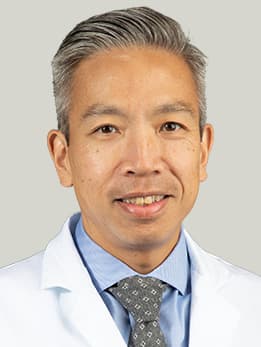Lipedema
What is lipedema?
Lipedema is a long-term health issue that is marked by the buildup of fat mainly in the legs, and sometimes in the arms. This condition can cause pain and swelling, making your skin feel tender and bruise easily. If you press on the affected areas, you might feel bumps like rice, peas, or walnuts under the skin.
Lipedema is a common condition that mostly affects women. Recognizing the symptoms early is important because lipedema can make everyday activities uncomfortable and impact overall well-being.
What causes lipedema?
The cause is not known, but it may run in families. Some studies suggest it can be passed down from parent to child.
What are the symptoms of lipedema?
- Fat builds up evenly in both legs
- Fat that does not go away with diet or exercise
- Affected areas may hurt or feel tender and bruise easily
- In later stages, lipedema can lead to a condition called secondary lymphedema
How to diagnose lipedema?
Lipedema is usually diagnosed by a healthcare provider based on your symptoms and a physical exam.
- Medical history: Your provider will ask when your symptoms started, whether family members have similar issues and if diet or exercise changes your fat or swelling.
- Physical exam: The provider looks for fat that is symmetrical on the legs usually sparing the feet. It can sometimes involve the arms and may be associated with tenderness, easy bruising and swelling patterns.
- Ruling out other conditions: Tests may be done to make sure the swelling isn’t caused by other problems, like lymphedema or circulation issues.
Treatment Options
- Combined Decongestive Therapy (CDT): A treatment used to help manage swelling, including swelling from lipedema or lymphedema. It includes:
- Manual lymphatic drainage (MLD): A trained therapist gently massages the affected areas to help move excess fluid out of the tissues.
- Compression therapy: Special bandages or garments are worn to keep the fluid from building up again and support the tissues.
- Tumescent liposuction: A minimally invasive procedure to remove fat, including fat caused by lipedema.
How to lose weight with lipedema?
Lipedema fat is different from typical body fat—it usually does not shrink with diet or exercise alone. However, maintaining a healthy weight is still important to reduce pressure on your joints, improve overall health and prevent additional fat or swelling from building in other areas.
- Balanced diet: Focus on nutritious foods and avoid extreme diets that are hard to maintain.
- Regular activity: Exercise can help maintain general health, support circulation, and reduce discomfort, even if it does not reduce lipedema fat.
- Compression: Wearing compression garments can help manage swelling and improve comfort during activity.
- Medical support: Working with a healthcare provider, nutritionist, physical therapist or occupational therapist who understands lipedema is important. In certain cases, procedures like liposuction specifically for lipedema may be considered.
Lymphedema Surgery
UChicago Medicine is one of the few centers in the country offering lymphovenous bypass and lymph node transfer, innovative surgical techniques designed to reduce swelling and alleviate discomfort for patients with lymphedema.
Learn more


